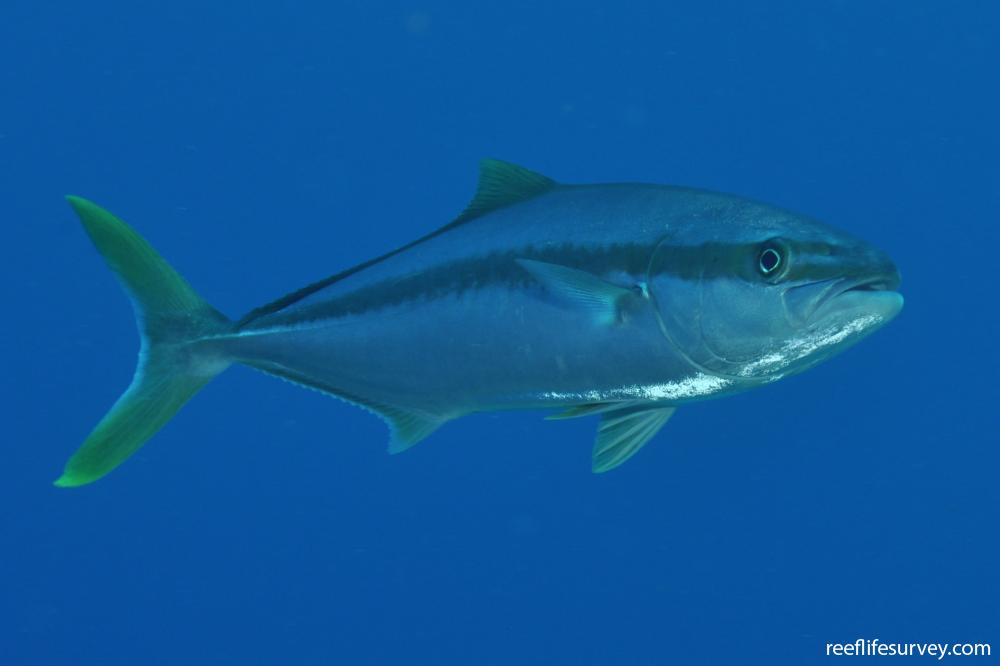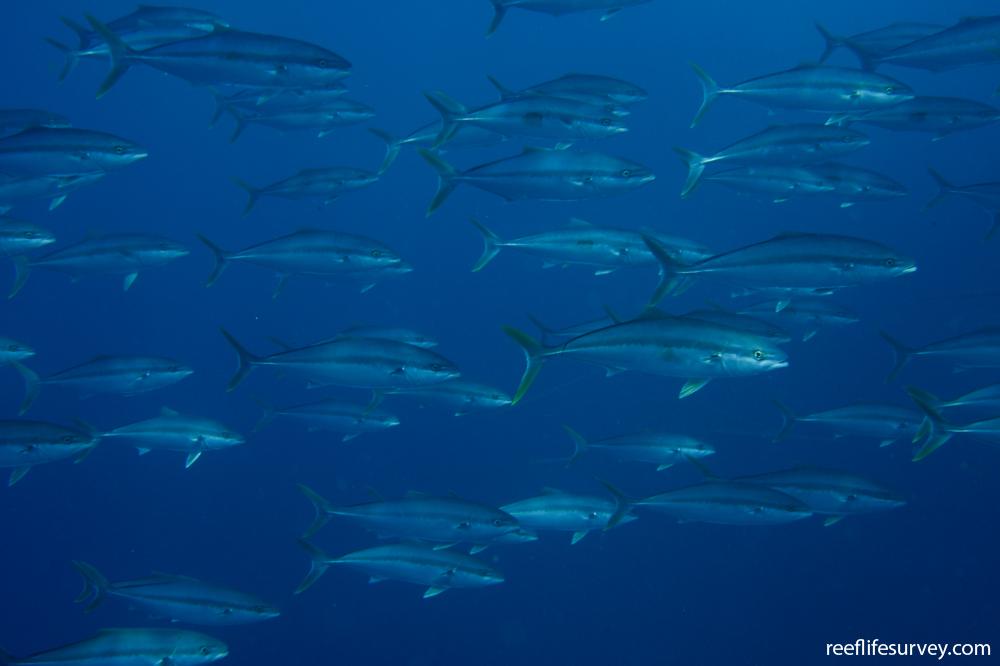Seriola lalandi
Yellow-tail kingfish | Bandit | Californian Yellowtail | Cape Yellowtail | Giant Yellowtail | Great Amberjack | Hoodlum | King Amberjack | Kingfish | Kingie | Silver King | Southern Yellowtail | YellowtailSame Genus
Distribution
Temperate Africa, Temperate Australasia, Temperate South America, Temperate northern Atlantic, Temperate northern Pacific, Tropical Atlantic/Caribbean, Tropical Eastern Pacific, Tropical Indo-Pacific
Description
Can be identified by its large size, blue-green colouration on the upper part of the body, yellow stripe along the midline and a short dorsal fin lobe. The species occurs in large schools on coastal reefs, particularly near deep dropoffs, and also occasionally enters estuaries. It is the largest of the pelagic fishes commonly seen by divers in NSW waters. It is also one of the fastest-growing fishes, reaching maturity after two years when about 500 mm long. The flesh of yellowtail kingfish from northern areas is often heavily infected with a parasitic worm, which turns the flesh mushy when cooked.
Information
Max Size: 250 cm
Sea Temperature Range: 15-26.2°C
Depth: 1-150m
Habitat Generalization Index: 19.07
Also referred to as the SGI (Species Generalisation Index), this describes the habitat niche breadth of the species. Species with values less than 15 are found in a relatively narrow range of reef habitat types (specialists), while those over 25 may be found on most hard substrates within their range (generalists). Learn more here.
Conservation and Rarity
IUCN Status: Not Evaluated
Occurrence: Frequent (12.4% of sites)
Occurrence describes how often the species is found on surveys within its distribution. It is calculated as the % of reef sites surveyed by RLS divers across all the ecoregions in which the species has been observed
Abundance: Many (14 per transect)
Abundance is calculated as the average number of individuals recorded per RLS transect, where present.
Edit by: GJ Edgar. 2008. Australian Marine Life. New Holland, Sydney











